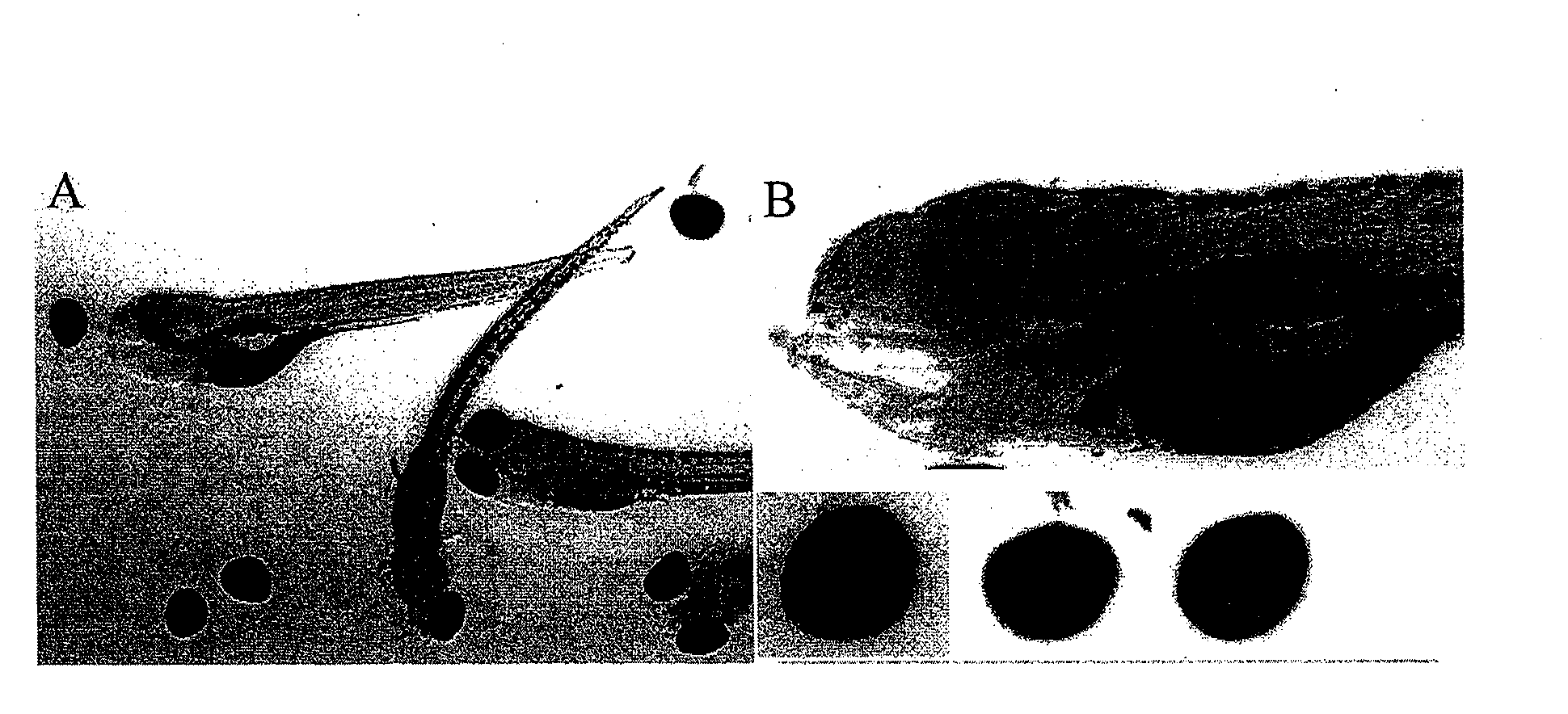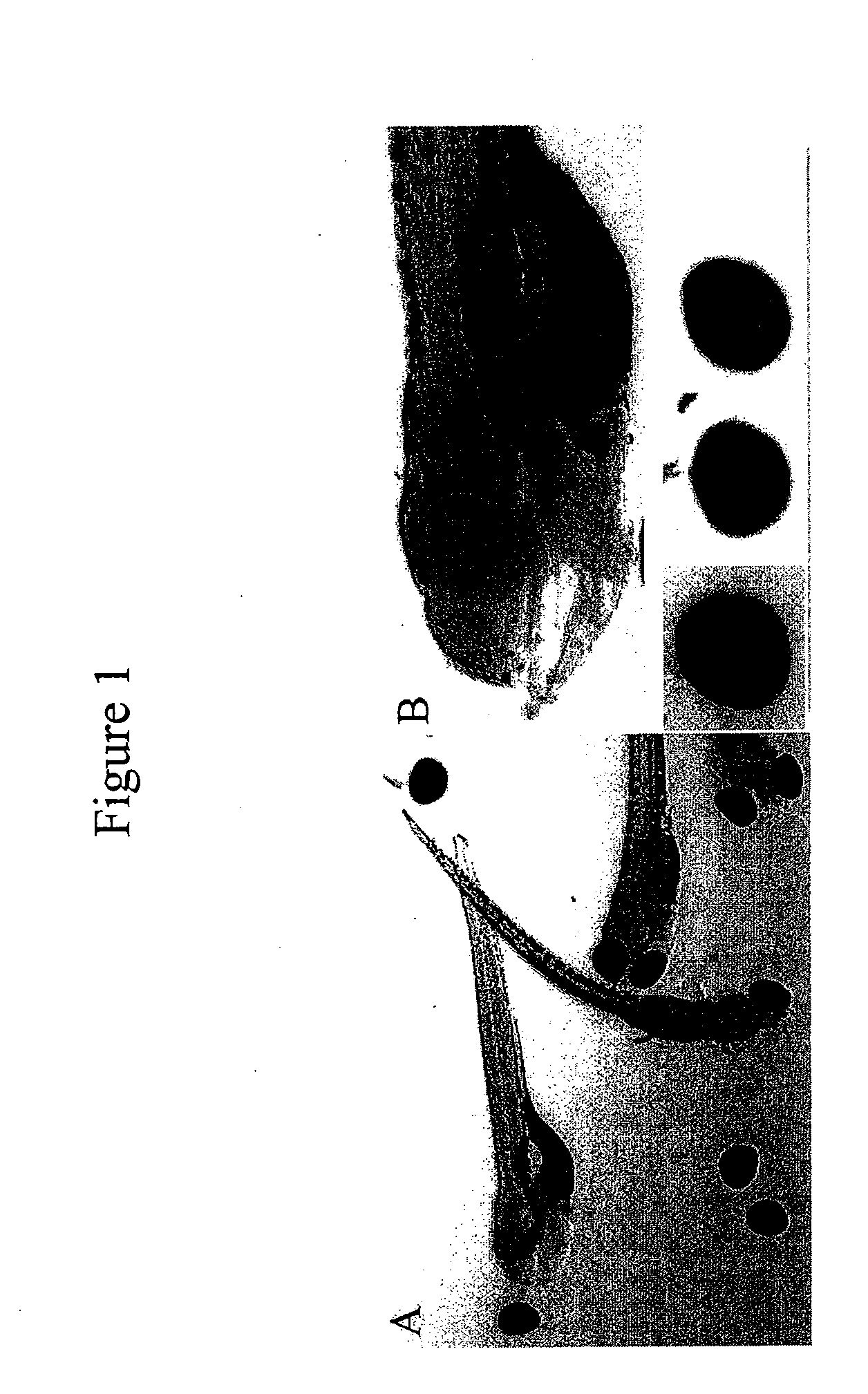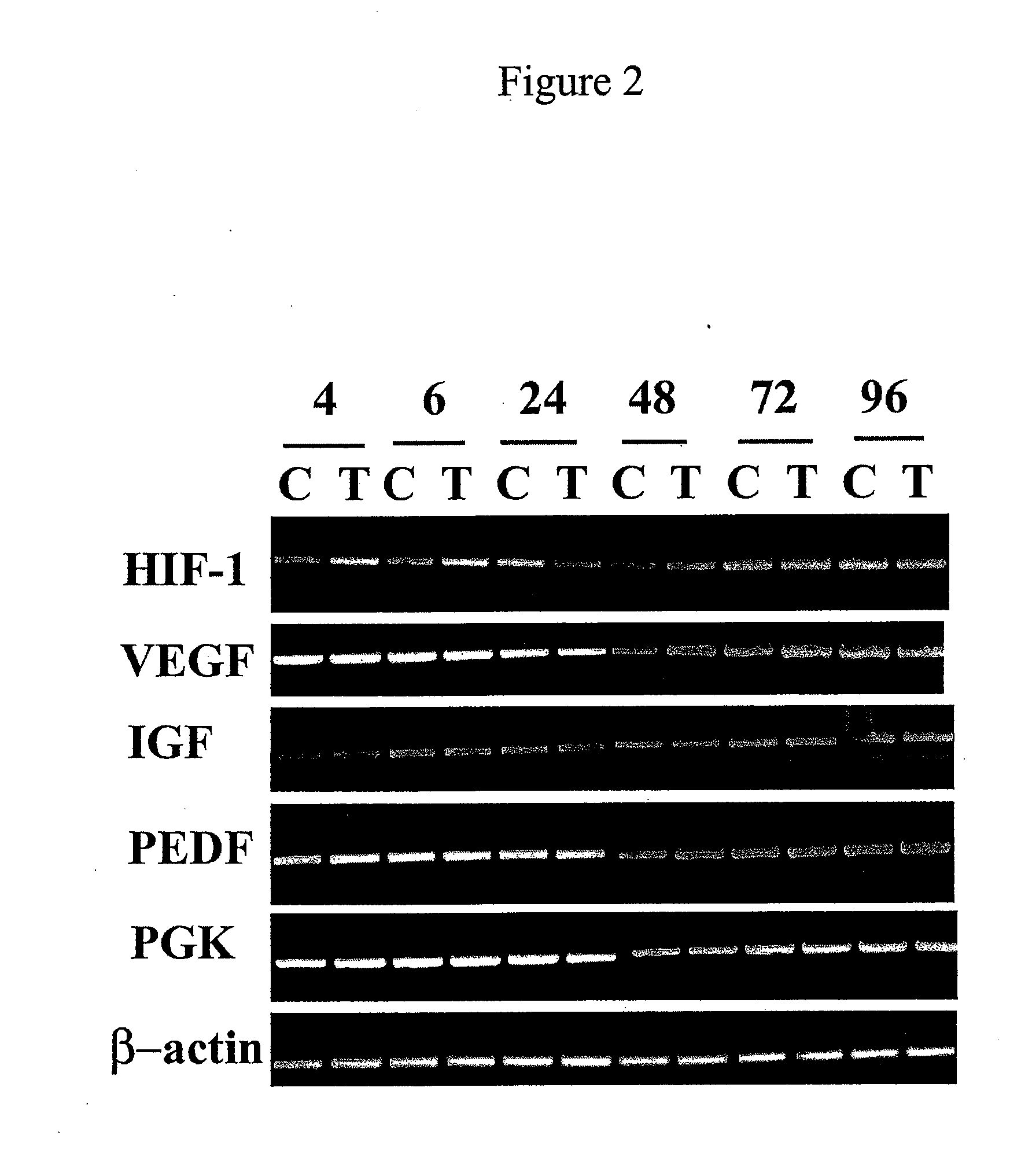Methods of screening an agent for an activity in an isolated eye of a teleost
a screening method and teleost technology, applied in the field of screening an agent for an activity in an isolated eye of a teleost, can solve the problems of not allowing the evaluation of the therapeutic and toxic effects of a compound in vivo on an intact animal, and the current screening does not permit the assessment of the compound effect on other potential target cells, tissues and organs of an animal together with the effect on the eye, and achieves the effect of increasing cell death activity
- Summary
- Abstract
- Description
- Claims
- Application Information
AI Technical Summary
Benefits of technology
Problems solved by technology
Method used
Image
Examples
example 1
Zebrafish Hvpoxia-Induced Choroidal Neovascularization (CNV) Model and Use of the CNV Model to Test Effects of Anti-Angiogenic Drugs
[0237]Ocular or choroidal neovascularization (CNV) occurs in age-related macular degeneration (AMD). As previously discussed, AMD is the leading cause of blindness in adults over 60 (see Klein et al., Am. J. Opthalmol. 137:486, 2004). AMD, which is responsible for profound vision loss, has two forms: dry and wet. The “dry” form is an early form of AMD, thought to progress into a more advanced “wet” form. The wet form of AMD is associated with sudden vision loss due to abnormal blood vessel growth (i.e., choroidal neovascularization) under the macula.
[0238]A. Hypoxia-Induced Choroidal Neovascularization (CNV) Model
[0239]Using a low (0.1 mg / ml) concentration of CoCl2, hypoxia was induced in the zebrafish eye and abnormal vessel growth was observed, specifically in the choroidal region.
[0240]To establish a reproducible animal model for choroidal neovascula...
example 2
Zebrafish Ocular Scarring Model
[0271]Scar formation typically occurs during the wound healing process, such as, for example, following surgery. As previously discussed, supra, wound healing takes places in three stages: inflammation, proliferation, and maturation. During these three stages of the healing process, fibroblast cells and new vessels comprised of endothelial cells (angiogenesis) proliferate, which results in scar formation in the wounded area. Such scarring occurs, for example, following ocular surgery for glaucoma. A zebrafish model for ocular scarring was developed, as described below.
[0272]Ocular scarring was generated in the zebrafish eye 1 day after microsurgery similar to scar formation visible in mouse eye 7 days after cutting the conjunctiva. Zebrafish ocular scarring is also similar to scarring in rabbits (see Cordeiro et al., Invest. Opthalmol. Vis. Sci. 40:2225-2234, 1999), however, in zebrafish it is not necessary to build a functioning filtering bleb by micr...
example 3
Dissociation of Intact Eyes from Zebrafish and Development of Eye-specific Angiogenesis ELISA
[0273]A. Method for Dissociating Eyes from Whole Zebrafish
[0274]A method to rapidly dissociate eyes from whole mount immunostained zebrafish was developed by incubating zebrafish with a collagenase enzyme (Clostridium histolyticum collagenase Type II, Gibco) at various enzyme concentrations and temperatures, and for various periods of time. The enzyme concentrations ranged from 15 U / ml up to 150 U / ml. The temperature ranged from room temperature to 37° C. The period of incubation ranged from 30 minutes up to 16 hours. It was found that the enzyme concentration, temperature and period of time have to be coordinated to dissociate intact eyes. Using this collagenase, 150 U / ml of enzyme at 37° C. for 45 minutes and dissociating eyes (see FIG. 1) by gentle pipetting was effective in dissociating intact eyes. Using this approach, the vascular structure in the choroidal vessel plexus can be easily ...
PUM
| Property | Measurement | Unit |
|---|---|---|
| Structure | aaaaa | aaaaa |
| Size | aaaaa | aaaaa |
| Density | aaaaa | aaaaa |
Abstract
Description
Claims
Application Information
 Login to View More
Login to View More - R&D
- Intellectual Property
- Life Sciences
- Materials
- Tech Scout
- Unparalleled Data Quality
- Higher Quality Content
- 60% Fewer Hallucinations
Browse by: Latest US Patents, China's latest patents, Technical Efficacy Thesaurus, Application Domain, Technology Topic, Popular Technical Reports.
© 2025 PatSnap. All rights reserved.Legal|Privacy policy|Modern Slavery Act Transparency Statement|Sitemap|About US| Contact US: help@patsnap.com



